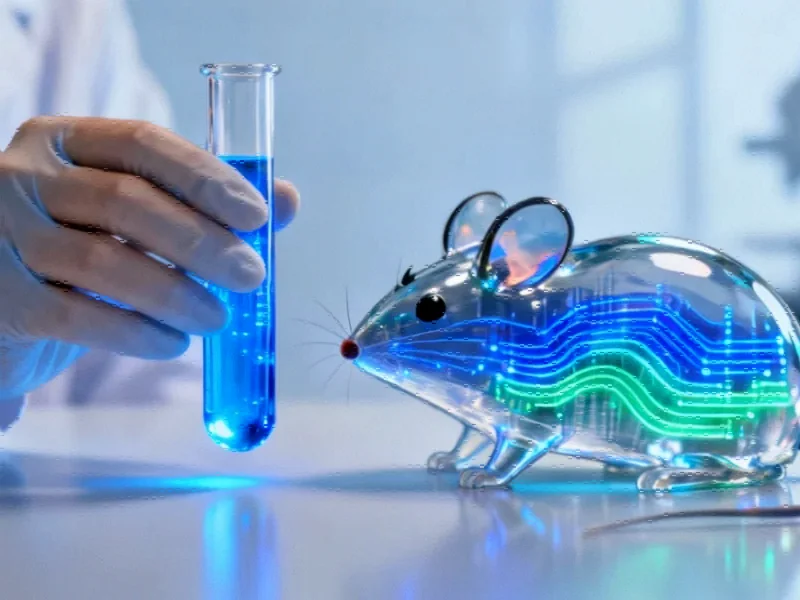Decoding the Stealth Tactics of Crop Pathogens
In a groundbreaking discovery that could reshape agricultural disease management, researchers have uncovered how oomycete pathogens like Phytophthora infestans – the organism responsible for the Irish potato famine – actively disarm plant defense systems. These pathogens employ specialized enzymes called galacturonide oxidases to neutralize the very signals plants use to coordinate immune responses, representing a sophisticated biological warfare strategy that has evolved over millennia.
The research reveals that during infection, oomycetes strongly induce production of Auxiliary Activity family 7 (AA7) enzymes, which specifically target oligogalacturonides (OGs) – fragments of pectin that serve as crucial damage-associated molecular patterns (DAMPs) in plant immune signaling. By oxidizing these signaling molecules at their reducing ends, the pathogens effectively mute the plant’s alarm system, allowing unchecked colonization and disease progression.
Genetic Architecture of Microbial Infiltration
Through meticulous genomic analysis, scientists identified five high-confidence AA7 genes in P. infestans, designated PiAA7A through PiAA7E. Transcriptomic profiling demonstrated that three of these genes (PiAA7A-C) show dramatic upregulation during plant infection, with expression patterns closely mirroring established virulence markers. This temporal coordination suggests these enzymes play a crucial role in the pathogen’s invasion strategy.
The evolutionary analysis reveals fascinating specialization across oomycete lineages. Plant pathogens have expanded their arsenal of Clade I AA7 enzymes, which feature unique structural adaptations including a patch of positively charged arginine residues surrounding the active site. This configuration appears optimized for interacting with negatively charged pectin fragments, highlighting how pathogen evolution directly counters plant defense mechanisms.
Biochemical Warfare at the Molecular Level
The research team conducted extensive biochemical characterization, expressing and purifying recombinant PiAA7 enzymes to understand their catalytic properties. All tested isoforms demonstrated specific oxidase activity against oligogalacturonides while showing no activity against other plant cell wall components. This substrate specificity indicates these enzymes have evolved precisely to target plant immune signals rather than performing general degradation of plant tissues.
Kinetic studies revealed complex regulatory behaviors, with some enzyme-substrate combinations showing classical Michaelis-Menten kinetics while others exhibited allosteric regulation or substrate inhibition. These nuanced kinetic profiles suggest that different AA7 isoforms may have specialized roles depending on the concentration and chain length of available oligogalacturonides during various stages of infection.
Disrupting Plant Immune Communication
The most significant finding demonstrates that AA7-oxidized oligogalacturonides lose their ability to trigger reactive oxygen species (ROS) production – a key early warning system in plant immunity. When researchers applied native long OGs to plant tissues, they observed the characteristic oxidative burst within minutes. However, AA7-treated OGs failed to elicit this response, and when mixed with native OGs, they actually suppressed the normal immune activation.
This interference effect suggests that oxidized OGs may either compete for binding sites with native signaling molecules or actively disrupt downstream signaling pathways. The implications for understanding how plant pathogens neutralize defense signals are profound, revealing a previously unknown vulnerability in plant immune systems that pathogens have learned to exploit.
Cellular Localization of Microbial Sabotage
Using advanced fluorescent tagging and confocal microscopy, researchers tracked PiAA7A localization during infection. The enzyme accumulates at critical invasion structures including sporangia germ tubes and haustoria – specialized feeding structures that pathogens use to extract nutrients from host cells. This strategic positioning ensures that the pathogen neutralizes defense signals precisely at the interface where plant cells would normally detect invasion.
The timing and location of AA7 expression suggests these enzymes serve as first-strike weapons in the pathogen’s arsenal, clearing the way for subsequent invasion mechanisms to operate without triggering effective plant resistance. Understanding these complex biological systems requires sophisticated computational approaches similar to those used in analyzing cloud infrastructure dependencies.
Broader Implications for Food Security
This research opens multiple avenues for developing novel crop protection strategies. By understanding exactly how pathogens suppress plant immunity, scientists can work toward breeding crops with modified oligogalacturonide signaling systems that remain functional despite pathogen interference. Alternatively, developing inhibitors that block AA7 enzyme activity could restore plants’ natural ability to detect invasion.
The discovery also highlights how market turbulence creates strategic entry points for innovative agricultural technologies. As climate change and global trade increase plant disease pressures, understanding these fundamental biological interactions becomes increasingly critical for maintaining food production systems.
Technological Convergence in Agricultural Research
Uncovering these sophisticated pathogen strategies required integrating cutting-edge technologies from genomics to structural biology and live-cell imaging. The research demonstrates how advanced computational modeling and high-throughput screening are revolutionizing our understanding of plant-microbe interactions.
Similarly, the infrastructure supporting this type of research increasingly relies on robust computational resources, highlighting connections to broader technology infrastructure considerations across scientific disciplines. As agricultural research becomes more data-intensive, the reliability of supporting systems becomes increasingly important.
The findings represent a significant advance in understanding co-evolutionary arms races between plants and pathogens. By revealing this previously unknown strategy for immune suppression, the research provides new targets for intervention while demonstrating the sophisticated mechanisms that evolve in complex biological systems under selective pressure. The continued integration of computational and experimental approaches promises to uncover additional layers of complexity in these critical interactions that impact global food security.
This article aggregates information from publicly available sources. All trademarks and copyrights belong to their respective owners.
Note: Featured image is for illustrative purposes only and does not represent any specific product, service, or entity mentioned in this article.



